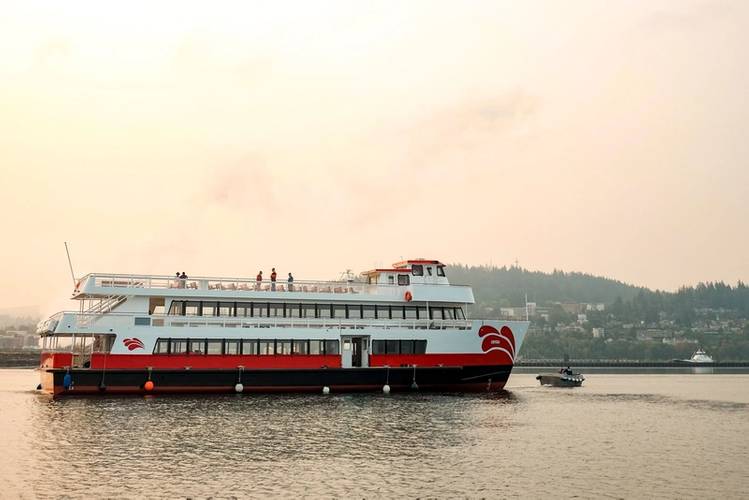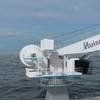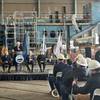Energy Storage - Now Relevant for Any Vessel Type
A primer on the quickly evolving topic of on board battery technology.
Energy storage itself is actually old news. Since the sails were taken down for good, merchant vessels have crossed the oceans using some kind of energy safely stored on board. Be it Coal, Diesel, Gasoline or Natural Gas, and regardless of energy type, safe storage onboard has been vital for safety and completion of the planned trip. On the other hand, active use of batteries in propulsion systems is relatively new. It started with smaller vessels, but expanded within a few years into medium and large vessels.
Improved Performance and Safety
One of the keys to this growth in both capacity and vessel types has been the new design that exceeds required thermal protection caused by a cell failure, typically called thermal runaway. Corvus, for example, has demonstrated in multiple tests that an injected failure on one battery cell does not spread to the adjacent healthy cells. Corvus has also introduced a contained battery solution that leads any potential gases out of the battery room, and into a safe area. These achievements, combined with active battery management systems have increased the confidence in battery technology significantly. The technology is now accepted as a viable and safe method to transfer energy onboard ships.
What's unique about batteries?
Batteries are the only major energy storage system that can instantly change from providing energy to absorbing excessive energy. The best way to describe this is to compare it to a coiled spring. You can compress it further, hence making it stronger, or you can release it to allow it to do a job for you. Simply explained, that's exactly what batteries can do for you. This feature is unique, and should be credited to power semiconductor technology developed by electrical companies. ABB was a pioneer in the marine industry, by launching the Onboard DC Grid in 2011.
Many other companies followed up with matching solutions quickly, and there are multiple integrators today actively using batteries in their solutions.
Taking Full Advantage of Batteries: count the ways
The ultimate goal for any new technology is to be able to perform the same job more efficient, less polluting, with reduced costs and improved safety. So how can we achieve this? Listed below are some of the features that today’s owner/operators appreciate when employing this technology:
- Zero Emissions: Ferries are the winner here. Most of them go between two specific docks, and recharge at each dock while vehicles are unloaded and reloaded. Norway alone will have 50 battery driven ferries in operation by 2020. Europe and Canada have started to do the same, and many battery ferries are under construction. Any vessel that routinely docks multiple times per day is a viable candidate for zero emissions, driven by battery technology.
- Emission Free Areas: Any vessel entering city limits will be under scrutiny in the future. People's health and comfort are directly linked to the air quality. With batteries installed, vessels can achieve zero emission a limited time; either while at dock in the cities, or when entering fjords or similar areas sensitive to pollution. Hybrid RoPax ferries today routinely enter and depart ports on battery power only. In open water, they still need engines, but they optimize them by recharging batteries and preparing themselves for next port. Exploration Cruise vessels do the same, but also when they enter pristine and sensitive landscapes.
- Peak Shaving: Many vessels have short peaks of high power demand – sometimes called “the hour of power.” Batteries can provide that boost of power, giving the vessel a total power rating that is higher than total diesel power onboard. Fishing vessels are a great example of this practice. They have peak power when hauling back gear, but also long periods with idling propulsion. Batteries will provide the peak power, and optimize the power by taking recharge when vessels have excessive power. Interestingly, tugs are also excellent candidates for this, as they only briefly use the tremendous amount diesel power they have installed in the course of a typical workday. Reduced engine size combined with batteries will help this fleet to become more efficient and environmentally friendly; going so far as achieving zero emissions when charging at dock. The technology enables tugs to mainly operate on batteries, with diesel engines as backup only.
- Spinning Reserve: Certain operations at seas require a spinning reserve. Simply put, this means that a sudden stop of an engine, or a power loss should not have impact on the vessel position or operations. This spinning reserve is per today achieved by running more engines online than needed. The disadvantage of this is the extremely low load on the engines, and unnecessary running hours. As authorities and other stakeholders increasingly begin to accept batteries as a spinning reserve, it allows operators to shut down idling engines that are running for spinning reserve only. This is typically strong benefit in the oil and offshore industry for vessels operating in DP mode.
- Faster Response: Batteries can accommodate large load variations in a short time. This is a benefit that has proven particularly efficient on gas engines with typically longer response time, and is believed to be a perfect partner when Fuel Cell technology comes as base load provider. There are multiple OSV's and Ferries operating today with the combination of gas engines and batteries onboard.
- Load Leveling: Anyone who has been in an engine room during a heavy storm knows how hard a diesel engine works to maintain the speed as the vessel rides the waves. This pumping of the power reduces efficiency. Batteries can be used to level out the load, and increase efficiencies – as much as 10% savings in fuel during transit in heavy seas.
- Silent Vessel: Imagine cruising into a noise sensitive area with no engines running; for example, whale watching, scenic fjord cruises, scientific operations, and seismic operations. The opportunity to operate a vessel for several hours with no engines running still promises many as yet unexplored opportunities.
- Redundancy: With batteries on board, not only one more power source is made available, a completely different energy source from the combustion engines opens up other possibilities and advantages. This is something that could benefit such hazardous missions such as firefighting and gas terminal support craft.
- Less Expensive Fuel: Finally, electricity – dependent on the source and local economic models – can be less expensive than running diesel engines. It does not pollute locally, and it does not pollute globally if the power is generated from clean power.
In short, batteries represents multiple ways to reduce running hours dramatically for virtual any vessel type, ultimately minimizing expensive service intervals, saving fuel and myriad other jobs on engines. The concept has legs, and is in use right here in the United States. This year, All American Marine and Red and White Fleet of San Francisco announced the launch of the Enhydra, the newest member of the R&W passenger excursion vessel fleet. The 128-foot LOA aluminum monohull vessel with a 30-foot beam is the largest lithium-ion battery electric hybrid powered vessel in North America built under “USCG Subchapter K” certification.
The propulsion integrator or the 600-passenger vessel is BAE Systems, who supplied their HybriDrive propulsion system that includes a generator, propulsion power converter, house load power supply and control system. No doubt more of these kinds of vessels are on the way. It might even be a good fit for your operations.
Sveinung Odegard is sales manager for Corvus Energy in North America. He has participated in hybrid and all electric projects in Norway, and combines his work in Europe with living in Seattle, WA. Odegard also owns and operates a small business focusing on green marine technology for the North American market.
This article first appeared in the November print edition of MarineNews magazine.



















